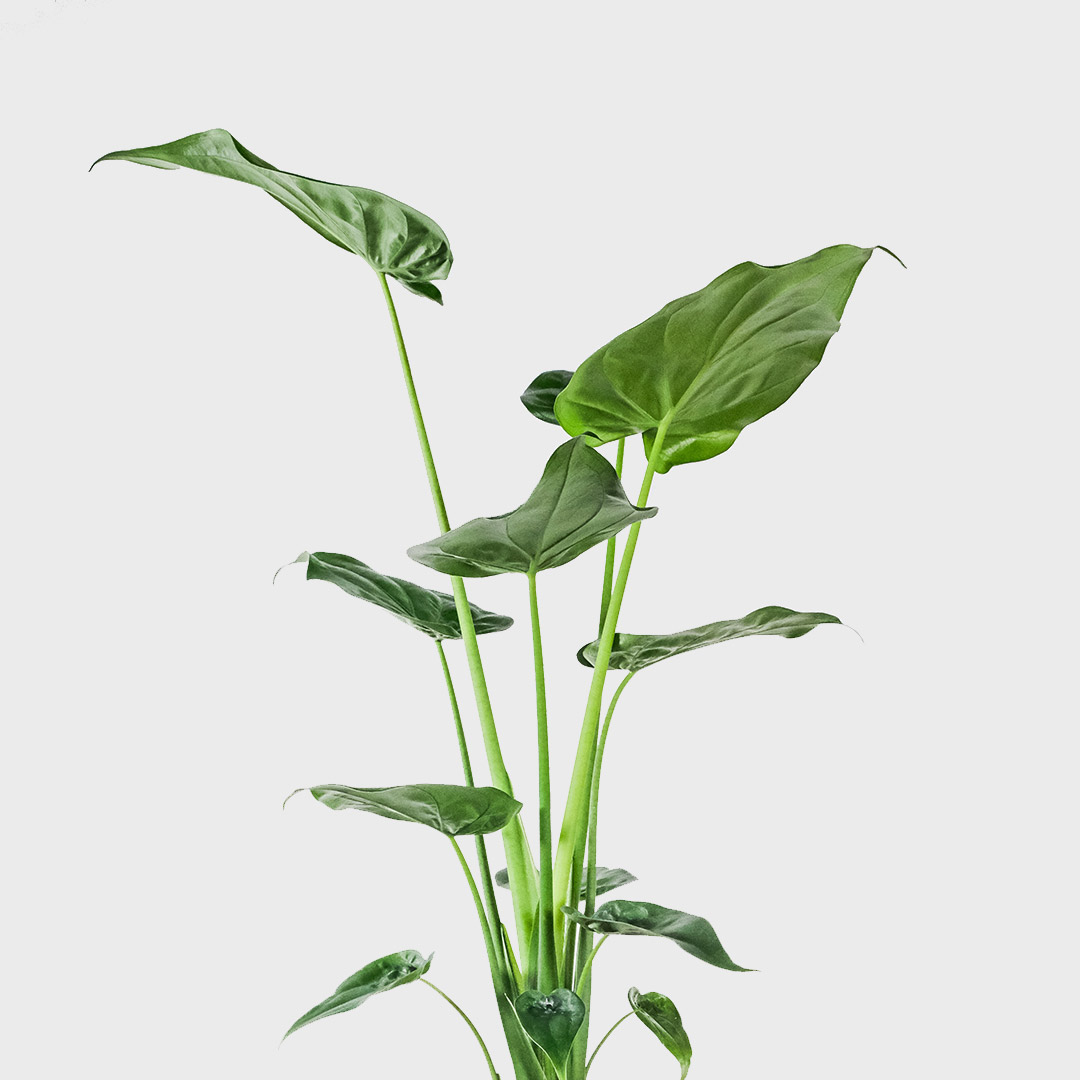
Deliver to
Europe
 English
EnglishThe Alocasia comes in many shapes and sizes and originates from the tropics of Asia. Especially in India, Alocasia is often found in nature. Alocasia plants belong to the Araceae family. And that is a large family! Among others like the Anthurium, Zamioculcas and the Philodendron. The most famous Alocasia plants are perhaps the Alocasia Zebrina (Elephant Ear), Alocasia Calidora and the Alocasia Pink Dragon. They are not the most easy houseplants, but they are beautiful!


Medium light
Water once a week
Toxic
Air-purifying
The Alocasia likes to be placed in a spot with lots of light. Not all species tolerate bright light well. It is best to place the plant in medium bright light. The Alocasia prefers a spot next to a window on the west or east. A spot near the south is of course also possible. Make sure that the plant is at least 2 metres away from the window. A spot near the north probably has too little light.
If an Alocasia gets too little sunlight, the plant will grow long stems. With its long stems the plant hopes to reach the sunlight. This can be crucial for the plant. Because of the long stems the leaves can become too heavy and break off.
Therefore, don’t forget to turn the Alocasia! The plant grows towards the sun. If you do not rotate the plant will only get full on one side and that is what you want to prevent.
The stems of an Aloasia store water in their stems. If an Alocasia gets too little water, the leaf will hang limp. Due to too little water, the stems are not full enough to hold the leaf high. It is therefore important to always keep the soil of the Alocasia slightly moist. You can check this to put your little finger in the soil. Never let the Alocasia dry out. Not even in winter!
It is best to water the Alocasia once a week all year round. In the winter it may be a smaller amount.
Give small amounts of water, rather than a big splash at a time. The Alocasia can’t completely absorb a lotof water within one week. This can cause the Alocasia to store the excess water in the roots. The plant can then suffer from root rot.
You can easily recognise root rot by the yellow leaves with brown edges. If this only occurs on the lower leaf, this is no reason to panic. The Alocasia repels the lower leaf to make new leaves.
The Alocasia uses a lot of energy from spring onwards to make new leaves. As a result, the plant needs extra nutrients. You can provide these nutrients by means of plant nutrition. We recommend giving plant nutrition once every two weeks. From spring until autumn. After autumn and in winter it is better not to give extra nutrients. In the autumn, plant nutrition can actually be harmful for the Alocasia!
Repotting the Alocasia is necessary every year. The plant is a fast grower, so its roots soon become too tight in the pot. Repotting the plant every year gives it new nutrients and more room for root growth. The airier soil is also very good for the water flowing through. The best period to repot is spring.
The most ideal temperature for an Alocasia plant is typically between 18 to 29 degrees Celsius. It thrives in warm and tropical climates.
Pruning an Alocasia can be done to remove any damaged or yellowed leaves, promotes new growth, and maintains a more compact and tidy appearance. Trimming back excessive growth can also help prevent the plant from becoming too leggy. Clean and sharp pruning tools should be used to make clean cuts and avoid damaging the plant.
If the air is too dry, the Alocasia can suffer from spider mites. To prevent spider mites, it is best to use the plant sprayer once a week. Spider mites are an infection of mites on plants. You can recognise the infection by infected leaves and a kind of cobwebs. If you have come across spider mites, it is best to place the plant outside. Wind and moisture from outside will quickly keep the spider mite away.


The stems of the Alocasia contain water. When the stems contain too little water, they will droop. Therefore, keep the soil of the Alocasia constantly slightly moist.
Alocasia plants can grow long stems if the plant doesn't get enough light. Long stems allow the plant to get more sunlight.
If you notice that the plant is getting long stems, it is wise to move the plant to a lighter location. Long stems can eventually break, because they can no longer bear the weight of the leaves.
The Alocasia naturally lets older leaves die off in order to grow new leaves. The development of yellow leaves therefore doesn't always have to have an underlying problem.
If there is an underlying problem, it is often due to too little or too much water. In the case of too little water, the leaves will often have a yellow colour as well as brown spots or leaf edges. If the plant has yellow leaves due to too much water, it is wise to check whether the plant is suffering from root rot.